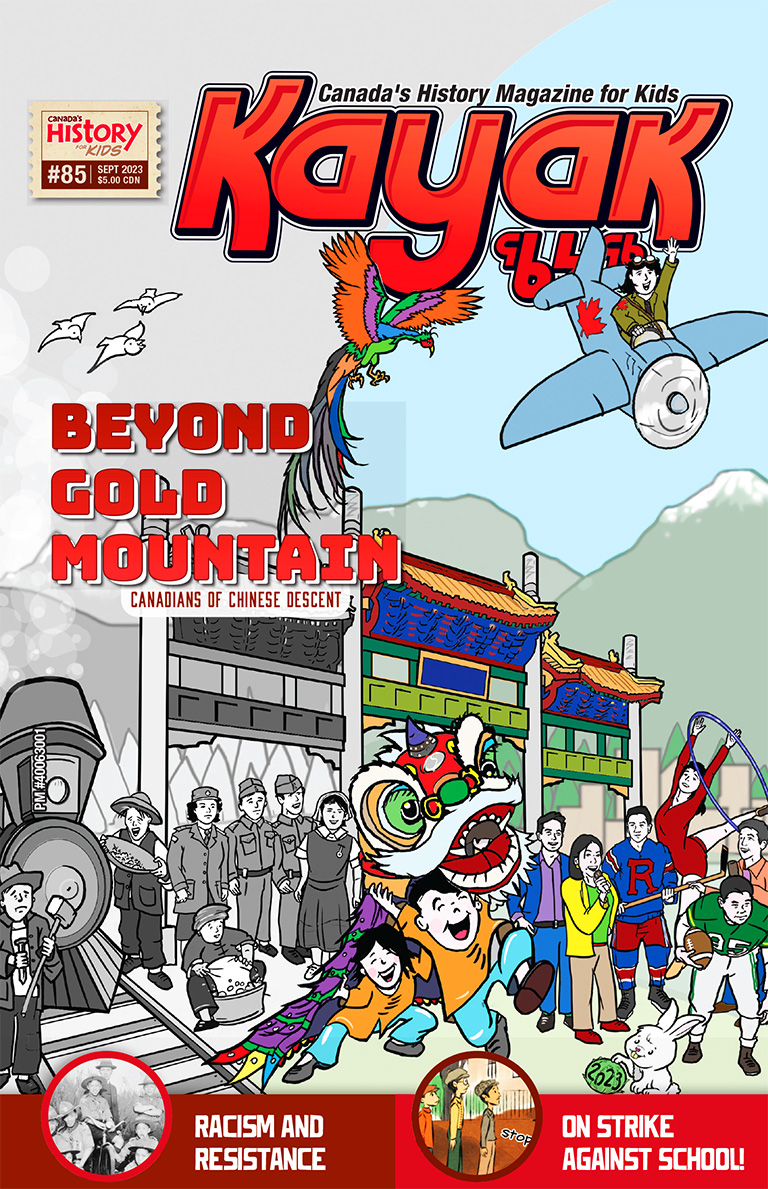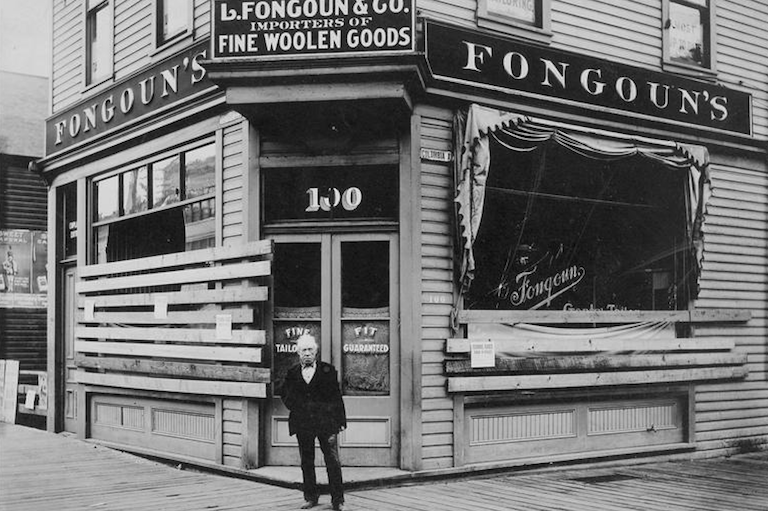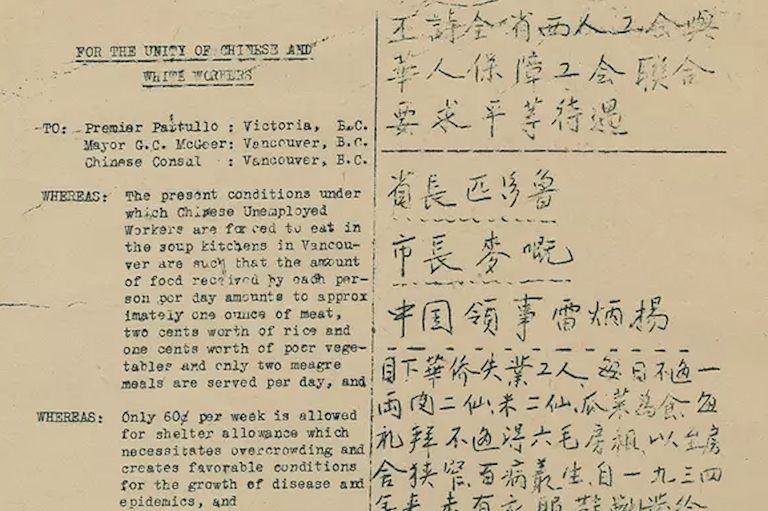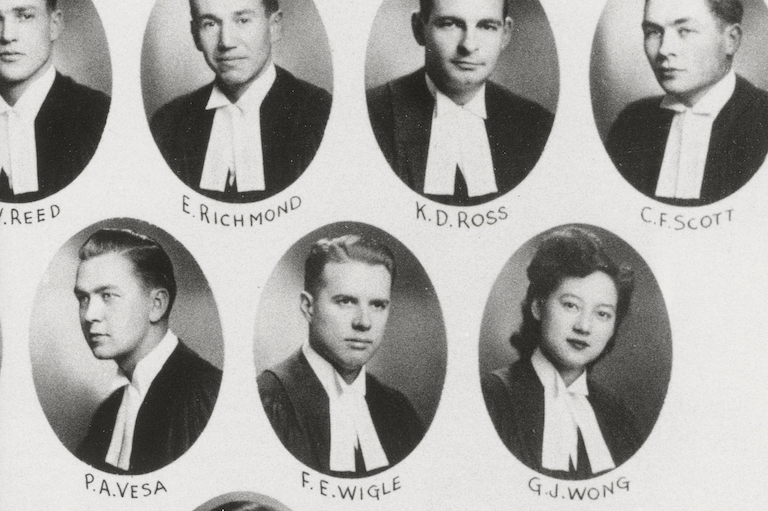Lesson Overview |

Grade Levels: 7/8, 9/10 Subject Area: Social Studies, History/Geography, Civics Time Required: 1 lesson (maximum 2) Magazine Issue: “Beyond Gold Mountain: Canadians of Chinese Ancestry,” Kayak: Canada’s History Magazine for Kids, September 2023 |
In this lesson, students will analyze primary sources relating to policies that affected Chinese immigration to Canada and the lives of Canadians of Chinese descent. Students will use a ranking ladder to judge the level of impact and make critical analyses about the impact of these policies. |
Historical Thinking Concept(s) |
- Use primary source evidence
- Establish historical significance
- Take historical perspectives
|
Learning Outcomes |
Students will…- analyze primary sources to construct meaning and knowledge.
- evaluate the primary source and make conclusions about the impact of the related policy.
- justify and defend the position of their ranking.
|
Background Information |
| In 1885, the Canadian government passed the Chinese Immigration Act implementing a $50 head tax in order to restrict Chinese immigration to Canada. By 1903, the head tax rose to $500. In 1923, the Chinese Immigration Act was further expanded to virtually ban all Chinese from immigrating to Canada, except under certain criteria. In addition to these acts, Canadians of Chinese descent faced racism, intolerance, and discrimination. They were barred from entering most occupations and faced legal and economic restrictions. This lesson not only explores the Chinese Immigration Act, but also the restrictions imposed on Chinese businessmen in owning and running cafés and laundries. |
Resources Required/Teacher Prep |
|
Primary Sources Used |
Warning about the use of language in the Primary SourcesThe language found in many of these primary sources includes terms and images that are considered offensive today. The teacher should review the use of these terms with students that were used in the time period of the primary source and the manner in which they should be treated today. |
Image 5 — Anti-Chinese Association LetterImage 8 — Chinese New Year Cartoon*Image 14 — Fernridge Time Checks [see extension activity]Image 15 — $500 Head Tax CartoonImage 17a/b — English CaféImage 17c — Help Wanted CartoonImage 19 — Superimposed Family Portrait
French Lesson Primary Sources UsedImage 26 — Excerpt from Le DroitImage 27 — Excerpt from L'Écho de l'ouest
|
Lesson Activity |
ACTIVATING- Teacher should have taught or reviewed the topic of Chinese immigration to Canada and the Chinese Head Tax.
- Teacher should review what a primary source is and how it can help us learn about past events.
ACQUIRING- Teacher should show primary source Image 8 – Chinese New Year Cartoon and through guided questions ask students to analyze the primary source, some suggested questions are:
- What is Chinese New Year?
- What stereotypes are present in this cartoon?
- How reliable are cartoons? How realistic is this cartoon of Chinese New Year?
- What is the message of this cartoon?
- Using Worksheet 2.1 have students analyze the impact of this cartoon — what would Canadians learn about Chinese New Year from this cartoon and how would Canadians of Chinese descent feel about this cartoon? Discuss as a class.
- Group students into partners and distribute the primary sources that the teacher wishes to use.
- Students should analyze the primary sources by discussing what they see with their partner and link the primary source to the policy (i.e., Chinese Immigration Act).
- For further information students should read the corresponding page in “Beyond Gold Mountain” that corresponds to the primary source:
- Image 5 – Anti-Chinese Association Letter = “Beyond Gold Mountain,” page 6
- Image 14 – Fernridge Time Checks = “Beyond Gold Mountain,” page 8
- Image 15 – $500 Head Tax Cartoon = “Beyond Gold Mountain,” page 6
- Image 17a/b – English Café = “Beyond Gold Mountain,” page 9
- Image 17c – Help Wanted Cartoon = “Beyond Gold Mountain,” page 9
- Image 19 – Superimposed Family Portrait = “Beyond Gold Mountain,” pages 5-6
- Students then place each primary source on the ranking ladder based on whether they believe it has a high or low impact (students can use arrows).
- Students then defend their choice by writing down in point form the impact the policy had on Canada and on the Chinese community.
APPLYING- Teacher debriefs the activity by having each group share their ranking of the primary sources or create a class ranking ladder.
- Teacher can have students answer an exit ticket on what these policies teach them about Canada’s views on Chinese Canadians during this time.
|
Lesson Alternatives/Accommodations |
Alternative 1- Teacher can create a ranking ladder on the front board and divide the class into larger groups of 3-4 depending on class size.
- Each group receives one primary source and analyzes it for the link to the policy and the impact.
- Each group decides where on the ladder they would place their primary source.
- After each group is done, each group presents their primary source to the class, attaches it to the ladder and explains the reasoning.
French Lesson- Teacher can have students compare the two French sources or divide the class in half and have each half analyze one of the two sources. (Fernbridge badge can also be used in this lesson.)
Accommodations- Primary sources can be enlarged on a projector or given digitally to allow students to zoom in and view the detail.
- Teacher can reduce the number of primary sources depending on the needs of the class.
|
Possible Extension Activities |
- Students can do further research into the Chinese Immigration Act, Chinese Laundries or the Head Tax.
- Students can create a more realistic cartoon about Chinese New Year.
Links for Extension Activity |
Possible Assessment |
- Observation and evaluation of knowledge
- Assess for understanding = exit ticket
|








